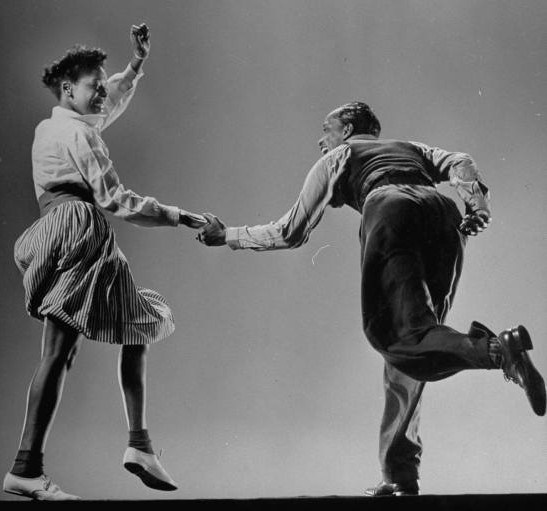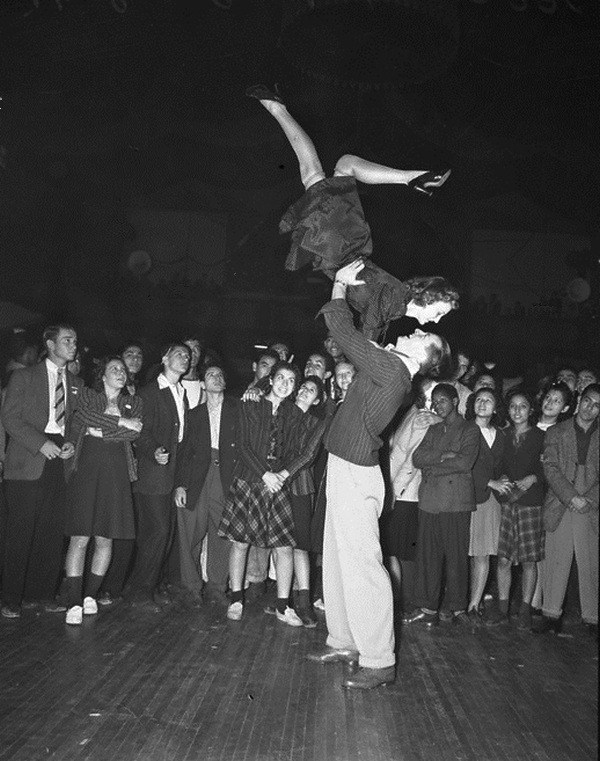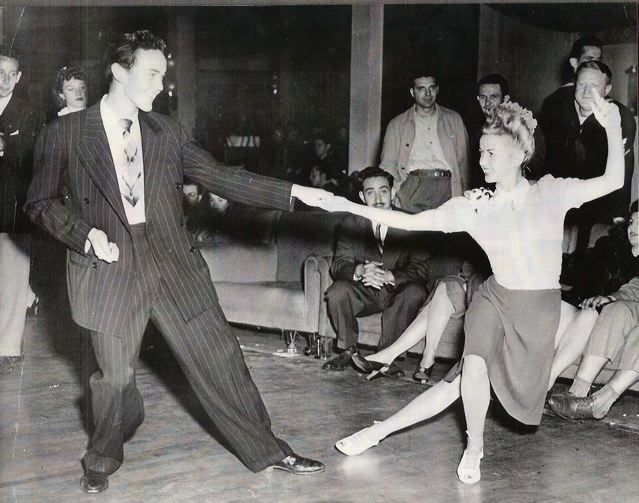Lindy Hop is considered the grandfather of all swing dances. This joyful social dance has a smooth and sinuous flow that fits the music of the big band eras. Its most recognizable pattern is known as the Swing Out, a break away that creates a racetrack like pattern when completed.
The Lindy Hop was coined in 1927 when (rumor has it that) a reporter asked dancer George “Shorty” Snowden what he was doing during a marathon dance in Harlem. Inspired by a newspaper headline of the monumental flight of Charles Lindbergh, “LINDY HOPS THE ATLANTIC,” Shorty George replied, “I’m dancing the Lindy Hop” which gave the new dance craze its official name.


The Lindy Hop evolved from earlier social styles such as the Charleston and the Black Bottom and most historians agree that it was the result of a mixture of African Dance and more “Structured” European dances. There is also the influence of the cakewalk (a style where black entertainers mocked formal white dances). Whatever its origins, the Lindy Hop had its heyday in Harlem’s epicenter of the Golden Age of Jazz: The Savoy Ballroom.
Films such as Hellzapoppin and Day at the Races, as well as more modern films like Malcolm X and Swingkids demonstrate the Lindy Hop in its more extreme form, as a fast and furious dance. Airsteps are also seen in these clips/scenes as their impressive and spectacular effects lend well for film. Credit is given to Frankie Manning for introducing Airsteps into the dance when during a dance contest, he and his partner devised a trick in which he tossed her in the air perfectly in synch with the music, forever changing the landscape & history of the Lindy Hop.
